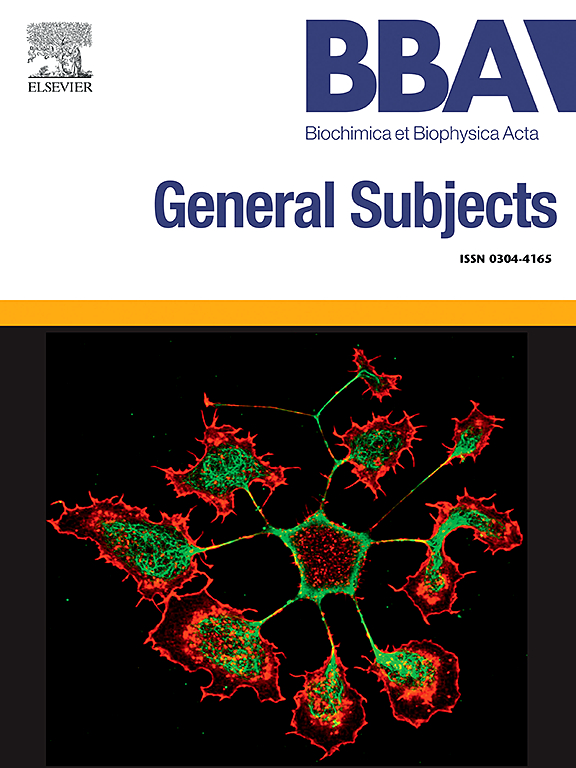在正常和渗透胁迫条件下转移rna在酵母细胞质中的扩散特性
IF 2.2
3区 生物学
Q3 BIOCHEMISTRY & MOLECULAR BIOLOGY
Biochimica et biophysica acta. General subjects
Pub Date : 2025-03-26
DOI:10.1016/j.bbagen.2025.130798
引用次数: 0
摘要
氨基酰基trna提供给翻译核糖体用于蛋白质合成的机制可能涉及细胞环境内的扩散过程,这一过程不可避免地受到大分子拥挤的影响。渗透胁迫导致细胞收缩,增加细胞质中大分子的浓度,减少蛋白质的扩散。在真核生物中,大分子拥挤对翻译机制的影响尚不清楚。在本研究中,首次采用布朗动力学模拟方法研究了大分子拥挤对模型酵母胞质环境中trna及其三元复合物微秒尺度扩散特性的影响。在正常细胞样条件下,trna和三元复合物的扩散预计减少多达8倍(与稀释条件相比),而在严重渗透胁迫条件下的扩散减少高达80倍。所有分子都表现出亚扩散行为,在渗透胁迫下这种行为更强。这些发现可能很容易用于预测蛋白质翻译动力学,包括在各种条件下tRNA传递到核糖体的关键过程。本文章由计算机程序翻译,如有差异,请以英文原文为准。
Diffusion properties of transfer RNAs in the yeast cytoplasm under normal and osmotic stress conditions
The mechanism by which aminoacyl-tRNAs are supplied to translating ribosomes for protein synthesis is likely to involve a process of diffusion within the cellular environment, which is inevitably impacted by macromolecular crowding. Osmotic stress leading to cell shrinkage increases the concentration of macromolecules in the cytoplasm, reducing protein diffusion. The impact of macromolecular crowding on the translation machinery in eukaryotes remains uncharacterised. In this study Brownian dynamics simulation were used for the first time to study the effect of macromolecular crowding on the microsecond-time scale diffusion properties of tRNAs and their ternary complexes within a model yeast cytoplasmic environment. Under normal cell-like conditions, the diffusion of tRNAs and ternary complexes was predicted to be reduced by up to 8-fold (compared with dilute conditions), whilst diffusion under severe osmotic stress conditions decreased by up to a remarkable 80-fold. All molecules exhibited sub-diffusive behaviour, which was stronger under osmotic stress. These findings may be readily used to predict protein translation dynamics, including the crucial process of tRNA delivery to the ribosome, under a variety of conditions.
求助全文
通过发布文献求助,成功后即可免费获取论文全文。
去求助
来源期刊

Biochimica et biophysica acta. General subjects
生物-生化与分子生物学
CiteScore
6.40
自引率
0.00%
发文量
139
审稿时长
30 days
期刊介绍:
BBA General Subjects accepts for submission either original, hypothesis-driven studies or reviews covering subjects in biochemistry and biophysics that are considered to have general interest for a wide audience. Manuscripts with interdisciplinary approaches are especially encouraged.
 求助内容:
求助内容: 应助结果提醒方式:
应助结果提醒方式:


